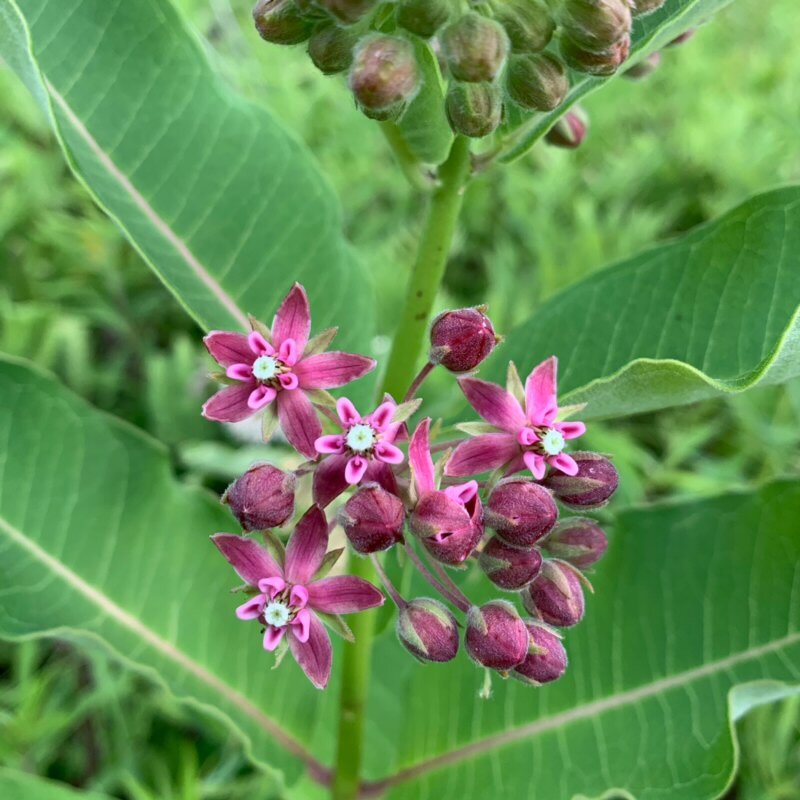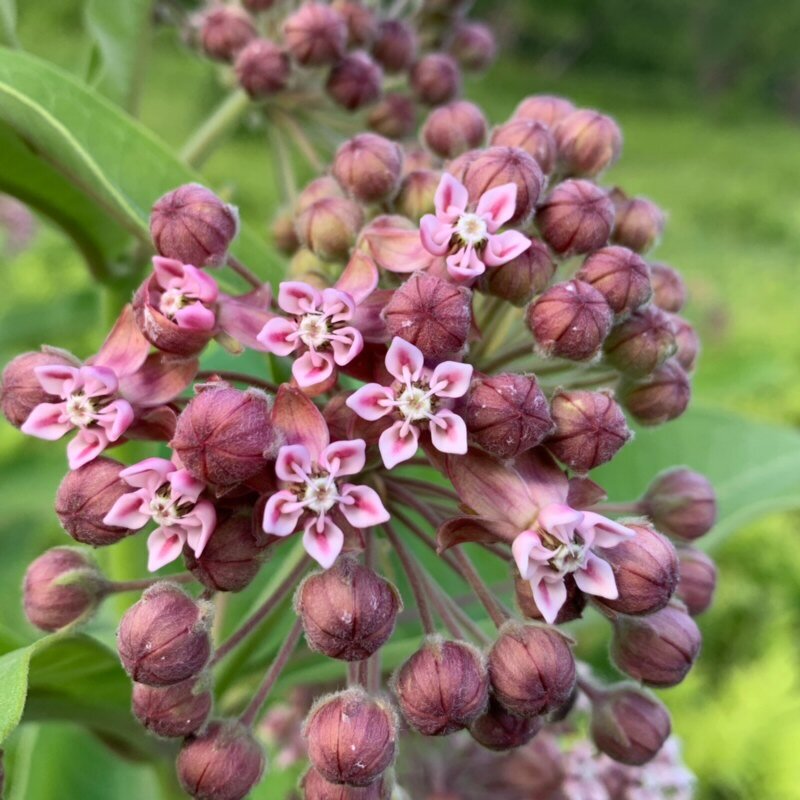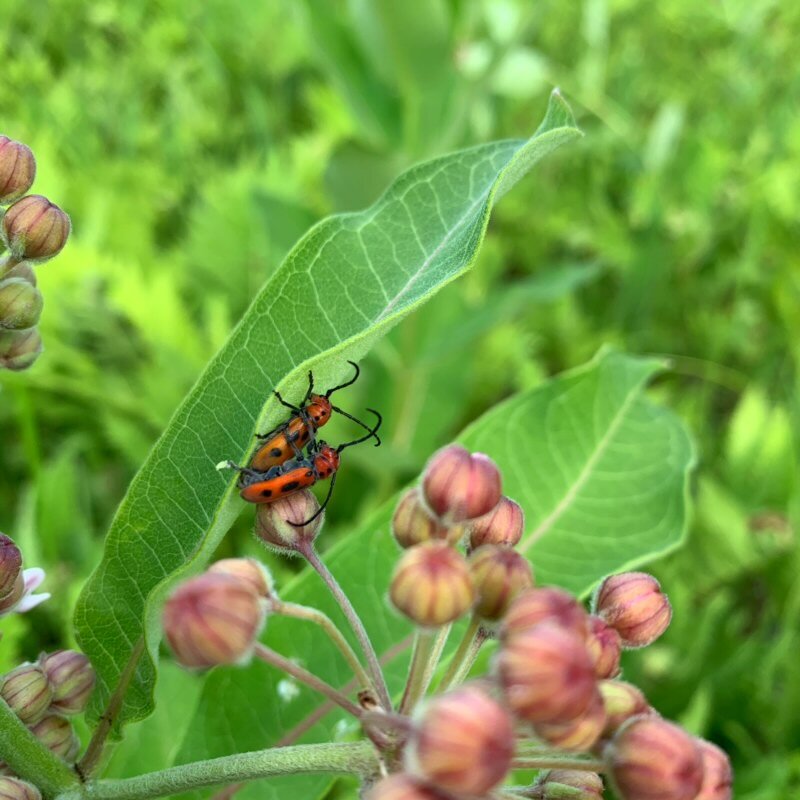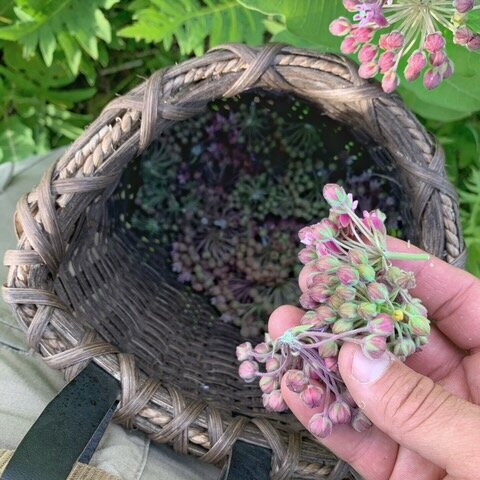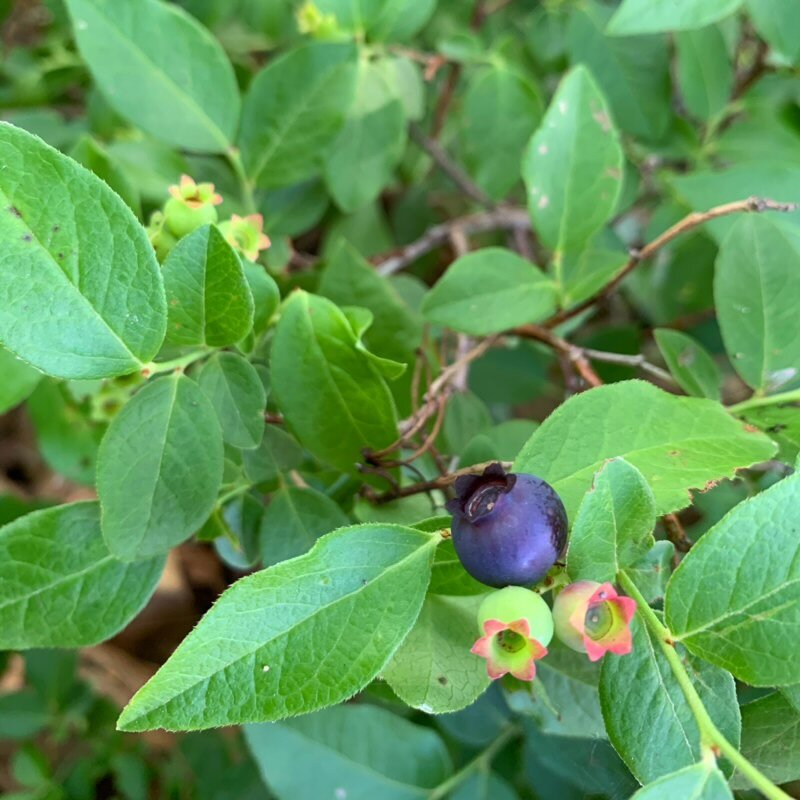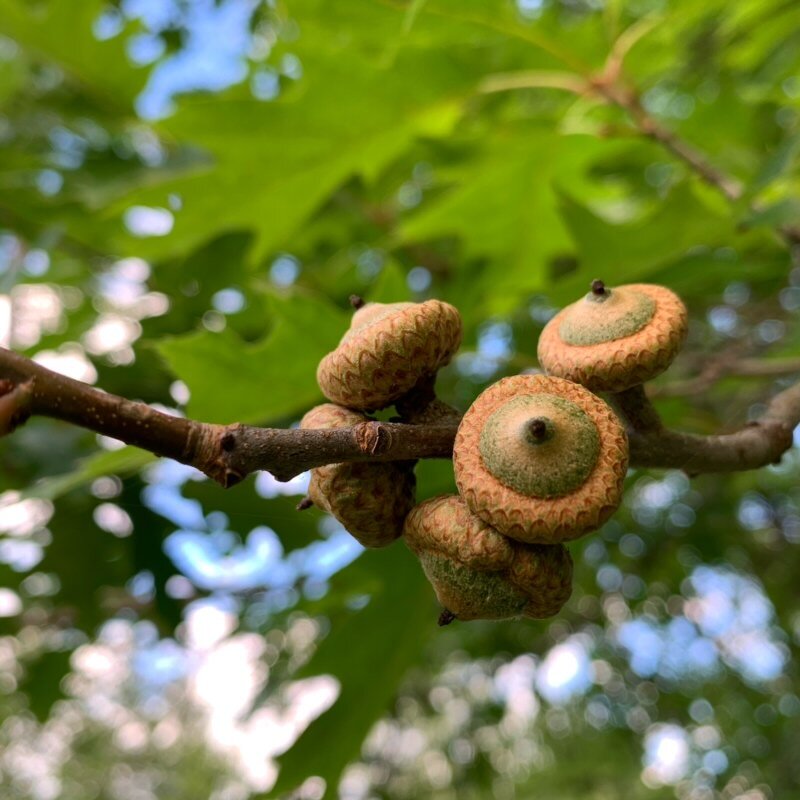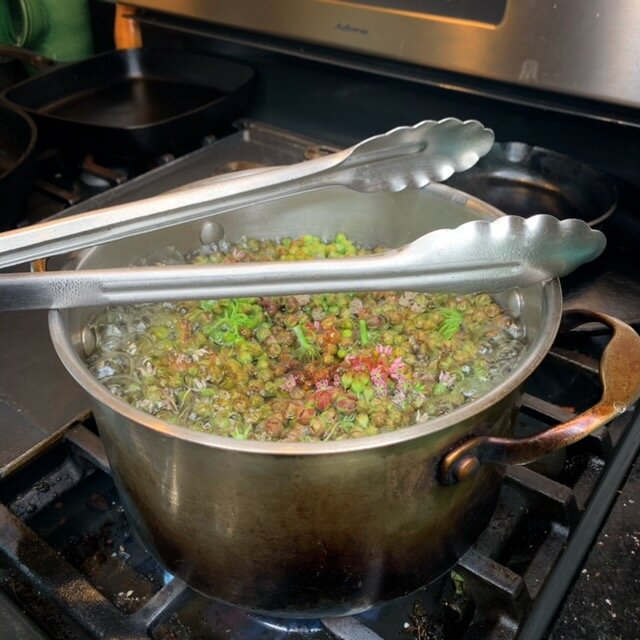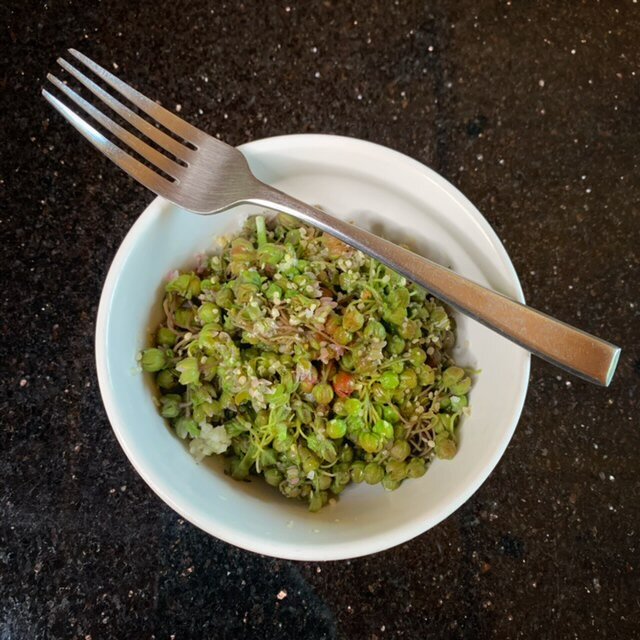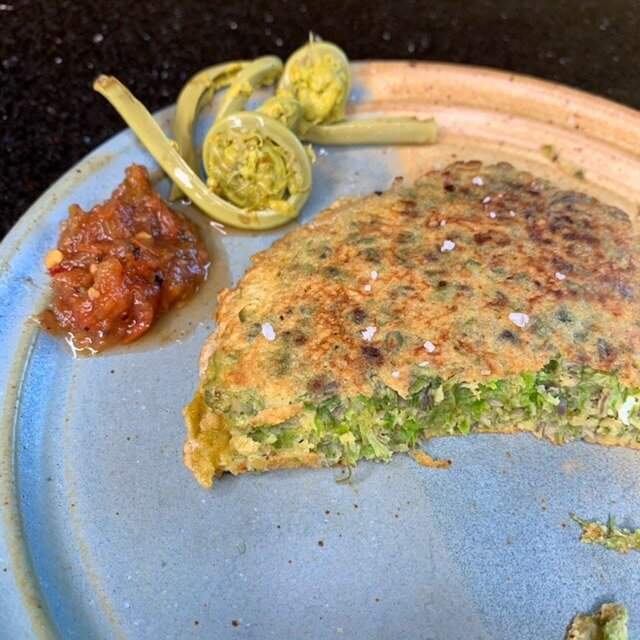How to Eat Common Milkweed Flowers
Common Milkweed (Asclepias syriaca) is probably the hardiest vegetable that I forage all summer. It provides many substantial meals during the few July weeks that it flowers.
mistaken identity
For years, wild food authors — usually parroting one another — claimed that the common milkweed was toxic (containing cardiac glycosides) and inedible (extremely bitter) without several rounds of boiling in successive changes of water. This misunderstanding was passed on for decades, eventually — thankfully — being proven false. Sam Thayer, in his seminal treatise The Foragers Harvest (2006), details this story at length. He surmises that the origin of this myth is Euell Gibbons’ 1962 wild food classic Stalking The Wild Asparagus, where the author likely conflated it with common dogbane. What a tragedy that Euell, and all those wild food enthusiasts who would follow after him, missed out on the wild-crafted cornucopia that this plant provides!
Milkweed Flowers are Food
Here, I’ll be writing about using the common milkweed flowers for food. Yes, the asparagus-like meristematic young shoots of milkweed are delicious, and yes, the tender immature fruits that will emerge soon are also great table fare. However, it’s the buds and flowers that I get the most excited about each year.
The entire inflorescence, known botanically as an “umbel”, is edible. That includes the green unopened buds or the fully opened, bright pink and magenta flowers, as well as the stems that connect them. Because they’re so densely clustered, these flowers are — for me — somewhat reminiscent of young broccoli. Not in their flavor, but rather in their texture. There are so many nooks and crannies that capture the spices, acid, oil, and salt that you use to dress them. And, like broccoli, they’re substantial. Unlike so many leafy greens, they maintain their volume when cooked, leaving you quite satisfied.
Where I live, in the northeast of the United States, plants begin flowering around the beginning of July, and due to their asynchronous maturation, many young buds are still developing while older, more mature flowers are already wilting back. This allows for a harvest that can last for a few weeks. I stop harvesting when the flowers begin to take on a yellow hue like those you can see here.
Conservation and Ethics
Milkweed’s brightly colored, perfumed flowers attract many herbivorous insects and pollinators. Bees, beetles, and butterflies abound. So much so that while visiting a colony you quickly become aware that you’re just one more participant gathering your food alongside these invertebrates. Take this mating pair of red milkweed beetles (Tetraopes tetrophthalmus) for instance, or this eastern tiger swallowtail butterfly (Papilio glaucus).
Because so many species depend upon this plant, here’s my rule for the general conservation of the species. I always leave at least one inflorescence on the plant. Some plants, particularly if the colony lacks density, will only produce one cluster of flowers. I’ll just pass these by, leaving the plant to fruit and eventually go to seed. But most plants, particularly those that are well established, will produce several umbels, and I’ll take one or two of these as I pass by, pinching them off at their base, far enough down the stem as to leave all the flowers still attached to one another.
There’s a lot of folks who worry that human harvesting of milkweed flowers will compete with monarch butterflies — whose young are obligate milkweed eaters — imperiling them. This is based, at least in part, on an ecological misunderstanding. While the monarch caterpillar eats almost exclusively the leaves of several species of milkweed, the adult monarch feeds on the nectar of many species of flowering plants. Because we’re harvesting the flowers, there’s no competition for the food resource that the juvenile monarchs depend upon. Also, though the flowers we harvest will not go on to produce fruits, and therefore seeds, the plant also propagates itself from its underground rhizomes. This means that even if we were to take all of the flowers — which we don’t — the colony can still grow and spread, continuing to host monarch larvae. However, by leaving an umbel on each plant we ensure that the milkweed’s wind-dispersed seeds can continue to colonize new areas, providing more habitat for future monarchs.
Harvesting
While any container or basket is great for this work, a dedicated blickey is even better. A blickey is a basket or container that hangs off your belt in front of you (at the 12 o’clock position), allowing you to drop your forgeables directly into it as you harvest. This way you’re not constantly bending over to fill and move your basket as you forage through the plant colony.
Harvesting, you’ll quickly come to understand this plant's common monicker. The “milk” in milkweed refers to the white latex it bleeds when the tissues are damaged, or leaves, stems, or flowers are broken off. Each inflorescence you pinch off transfers some of this latex to your fingers. Initially, it’s just a bit sticky, but as you carry on it’ll soon seem as if you’ve gotten into a bottle of Elmer’s Glue. I keep some spare water in my vehicle to rinse my hands at the end of the harvest, as well as a towel to dry them. A light scrubbing with water quickly removes this latex. I also bring along a pre-iced cooler and a produce bag to put my flowers in so they don’t wilt in the midsummer heat. It’s always good advice to cool your produce down as quickly as you can, whether it came from the market, the farm-stand, or the field.
Take a Look Around
Whenever you’re foraging, it’s an opportunity to look for other “indicator species” to help you better recognize the habitat your target species prefers. This particular colony was punctuated by the gorgeous, nodding flowers of this red Canada lily (Lilium canadense).
You can also keep an eye on the stages of development of other plants in the area. This helps you to remember when to start harvesting in the future, and it’s also a way to check in on how the season is unfolding. For instance, here I can see that the milkweed is in full flower just as the first of the season’s low bush blueberries (Vaccinium angustifolium) are beginning to ripen. Also, it looks like there’ll be a good acorn mast this year, based on these developing northern red oak nuts (Quercus rubra).
And, don’t forget to inspect the skeletons of plants past! Here you can see the remnant stalks of last year’s milkweed. Knowing how to identify last year's plants can help you discover new spots, particularly in late fall or early spring after the plant has died back. For example, you might be hunting in late fall and stumble into an area replete with these milkweed remnants. That would be a good time to take a mental note, a photo with location services enabled, or a GPS coordinate so you can return the following summer to forage there. You’re foraging time can be spent gathering food for today, but also intel for the future.
Cooking
Once home I prefer to boil the flowers and buds in water for a minute or two and then transfer them to a salad spinner since they hold so much water. Once dry they can be dressed with a bit of vinegar, olive oil, and salt. You can also take them one step further with the following recipe.
Milkweed flowers make a great side dish, but sometimes I make them the main course with this wild-inspired vegetable burger. I begin by making a spiced flour. You can use a wildcrafted flour, like acorn, or something commercially available like maize (corn) flour. I’ll add salt and spices like pepper, garlic powder, onion powder, cumin, and paprika to taste. Then I’ll beat a few eggs and fold in the spiced flour. The consistency should be thick like pancake batter.
Next, I’ll submerge my milkweed flowers into the mix using a set of tongs and really move them around until they are evenly and completely coated in the batter. Then transfer them to a hot, lightly oiled pan. I set them down as a glob, but use my spatula to quickly form them into a patty. Be sure your flowers are already cooked through since the egg batter will cook quickly on the pan. If not you’ll burn the egg trying to cook the milkweed.
Let the egg cook halfway through, then flip and repeat — all the while grooming the patty shape. These veggie burgers are delicious and quite filling too. You can eat them as is, or serve them on a burger roll they way you would any other burger.
The flavor of milkweed is both vegetal — perhaps a bit like green beans — and also floral and fragrant. There’s a distinct perfume that’s difficult to describe but quite easy to detect when you taste it. While quite enjoyable to eat, I do find that I begin to lose interest in this flavor as the season approaches its conclusion. For this reason, I prefer to eat the flowers in-season. I’ve blanched and frozen them before but found that, though they preserved quite well, I’d rather just wait until the following year to have them again. And that works just fine for me since much of my wild-food practice is as much about the annual tradition as it is about the meal itself.
So, I’ll enjoy them for the next couple of weeks, and then I’ll say goodbye until next year. Besides, in a couple of weeks, I’ll be passionately distracted by some other species, and milkweed flowers will be just one more fond memory of midsummer.


